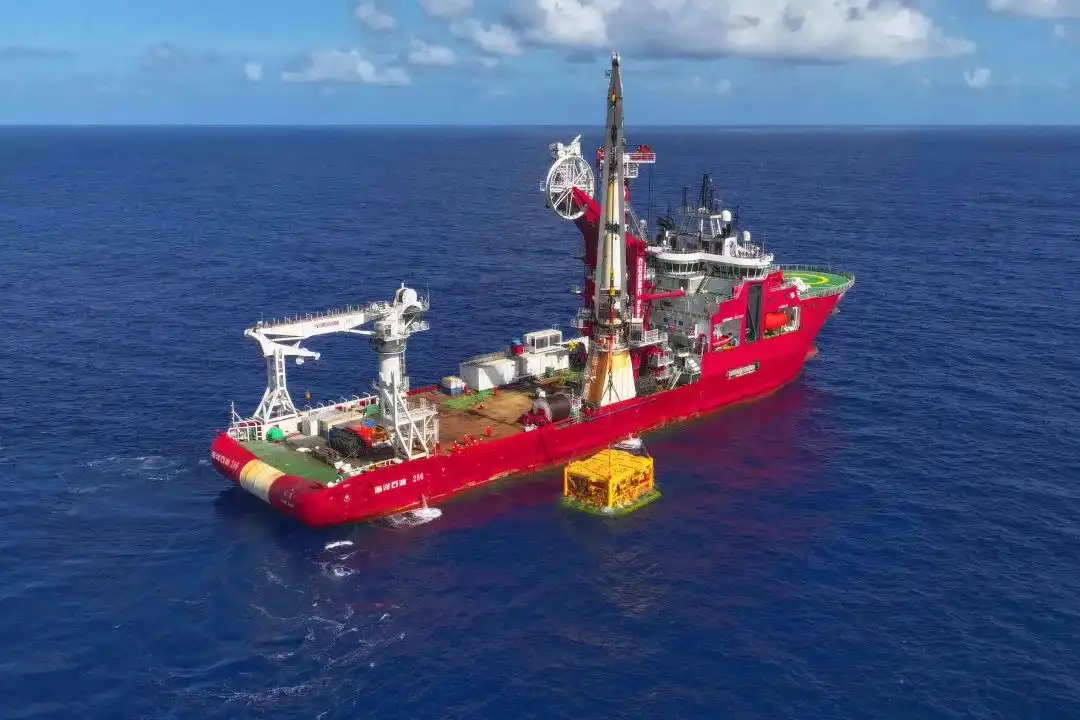Significant progress has been reported in the second phase of CNOOC's "Deep Sea One":Deep underwater central manifold is fully in place
On April 9th, CNOOC announced that the underwater engineering work of the "Shenhai Yihao" Phase II project had made significant progress. Three deep-water underwater central hubs, with the heaviest weight and the most complicated structure, have been successfully installed in place. This is the first time that China's independently-developed deep-water underwater multifunctional manifold system has been used to develop deep-water high-temperature and high-pressure oil and gas reservoirs. It is of great significance to the enhancement of China's deep-water oil and gas development equipment industry chain and the improvement of deep-water complex oil and gas resources development capabilities.


CNOOC's Shenhai-1 Phase 2 project is located in the Qiongdongnan Basin in the western zone of the continental shelf of the northern South China Sea, about 132 kilometers from Sanya City and 70 kilometers from the Shenhai-1 energy station. It is China's first deep-water high-pressure gas field project, with proven natural gas geological reserves of over 500 billion cubic meters, a maximum operating water depth of nearly 1,000 meters, deployment of 12 underwater gas wells, and construction of a new deep-water underwater production system.
Shen Jianwei, the chief engineer of construction for the subsea production facilities for the Phase II Shenhai No. 1 Project, stated that Phase II of the Shenhai No. 1 Project was the first of its kind to develop deepwater oil and gas resources using a “subsea production system + shallow-water riser processing platform + deepwater semi-submersible platform remote control system.” Its subsea production system primarily includes a series of subsea devices such as a manifold center, launch manifold, suction pile, and umbilical. Once the project is complete, the Shenhai No. 1 energy station will use an umbilical to remotely control the project. The goal is to ensure substantial reliance on existing oil and gas production facilities and the economical and efficient development of deepwater oil and gas resources.
Subsea manifolds are part of the core technologies used in the development of deep-sea oil and gas fields. They are distributed among clusters of wellheads on the seabed, playing the major function of gathering and transporting deep-sea oil and gas to platforms. They are known as subsea “oil and gas hubs,” are the heaviest equipment in subsea production systems, and constitute the main infrastructure of oil and gas fields in conjunction with subsea trunklines for external transportation. The combined weight of all three subsea manifolds in Phase II of “Shenhai-1” exceeds 540 tons. The first and second sets were installed at the end of last year and the beginning of this year, respectively. This installation of the third subsea manifold (the south manifold) connects to seven subsea gas wells. It is the heaviest subsea structure of this project, weighing 187 tons, and the installation was performed by the “Haiyang Shiyou 286,” China's first 3,000-meter deep-sea, multi-functional engineering vessel.
Deepwater subsea operations are often subject to adverse effects such as extremely high hydrostatic pressure, unstable currents, and darkness on the seabed. During the offshore installation and lowering of this central hub, the status of the main crane hook and counterweight needs to be accurately monitored. At the same time, the stability and accuracy of the central manifold during alignment with the suction pile on the seabed need to be ensured. The installation difficulty is similar to that of "manned spacecraft" docking in space.
Wang Zhifeng, project manager for the second phase of the Shenhai One underwater facilities installation project, said that the installation was carried out during the monsoon season at sea, with complicated and changeable climate and sea conditions, which posed great challenges to the installation and lowering operations. To this end, the project team repeatedly optimized the construction plan, successfully tackling technical difficulties such as the twisting of wire rope during ultra-deep water engineering operations, and refreshing the record for double-rope hoisting operations at a depth of 960 meters in China's marine engineering.
According to the introduction, as a next step, the Phase II Project team of China National Offshore Oil Corporation (CNOOC) will continue to install facilities such as the umbilical cable, soft oil-gas transmission hose, and underwater oil production tree based on the current construction foundation to prepare for the timely completion of the project. (written by Cao Xiuyin)
(Source: Science and Technology Daily)
